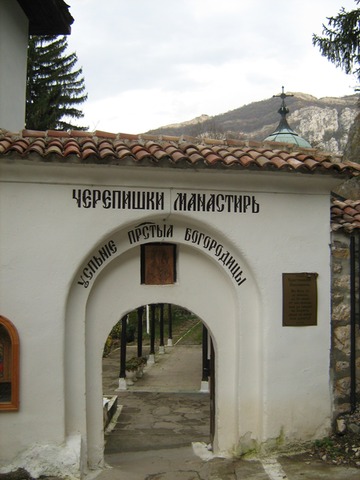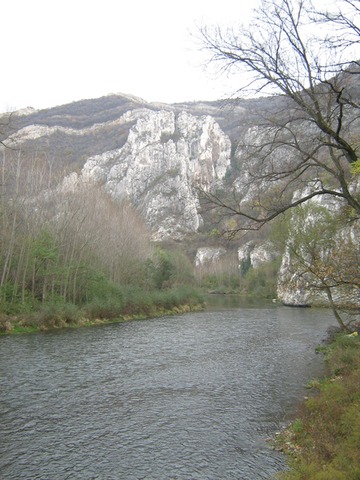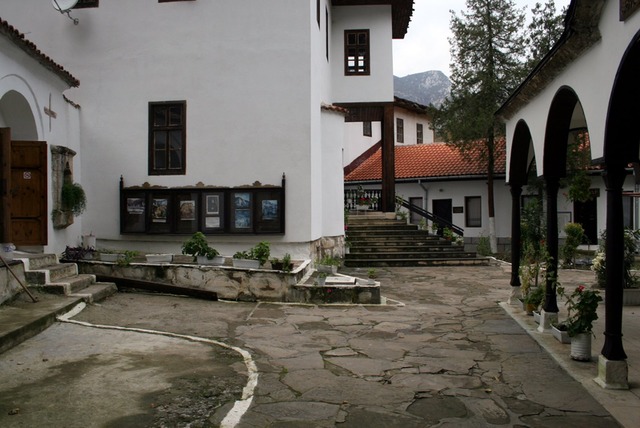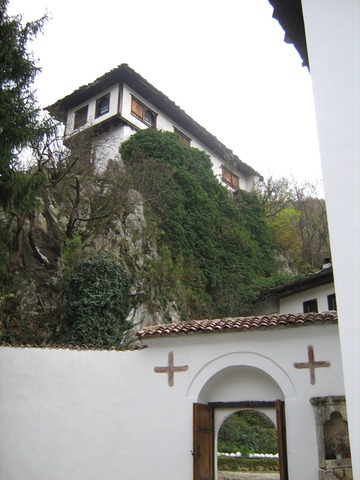Cherepish Monastery 'The Assumption'
Cherepish Monastery 'The Assumption' is situated in Iskar River gorge, on the northern slopes of the Balkan Mountains, at Iskar riverside. The monastery is near village of Lyutibrod, 10 km away from town of Mezdra, 25 km away from town of Vratsa and 90 km away of city of Sofia.
Transport
The monastery is easy to reach by car if one sets off from Sofia, following the road to Mezdra (international road E79), which goes down the Iskar River gorge. A small asphalt offroad leads to the gates of the monastery. There is a railway stop in village of Lyutibrod as well.
History
The origin of the Cherepish Monastery is connected to the history of the medieval “Koritengrad” which existed in the nearby unique natural area “Ritlite”. According to the legend, the monastery has acquired its name because of the white colour of the bones of the perished Bulgarian soldiers which were left after the battle of tsar Ivan Shishman with the Ottoman raiders. It was mentioned in a document kept in the Sofia church, historical and archeological museum that the monastery was destroyed during the battle.
The Cherepish Monastery was restored in the beginning of the 17th century by the renowned Bulgarian ecclesiastic, builder and painter Pimen Zograf of Sofia. At that time the present-day church was built. During the period of Bulgarian Revival, the monastery was inhabited by men of letters and calligraphers who have left valuable works and literary masterpieces. Thus, the monastery gradually has become an important literary, cultural and educational centre. It housed a monastery school, where books, saints’ biographies and gospels were written and transcribed there, some of them are the Cherepish Gospel from the 16th century , enclosed in golden covers and decorated with scenes from the bible, as well as the Gospel of Monk Danail and the Book of the Apostles of Jacob.
Gradually the Cherepish Monastery has flourished and a few new buildings such as the old monastery’s kitchen, Rashidovata house, the building of Danail, the chapel with the ossuary, the belltower and so on were built in the beginning of the 19th century.
St. Sofronni of Vratsa found his shelter in the Cherepish Monastery in 1798-1799. The abbot Epifanii established here the Ljutibrodski Revolutionary Committee. The monastery was used to be visited by members of the Vratsa Revolutionary Committee within the period 1872-1876. The popular area “Rashov dol”where the last battle of Botev’s detachment of rebels against the Turks was conducted, led by Georgi Apostolov, lies in close proximity to the Cherepish monastery.
The Cherepish cloister was visited also by prominent Bulgarian writer Ivan Vazov in 1889 and 1907. In 1897 another renowned author, Aleko Konstantinov, stopped here during his tour of the region. Following his visit to the monastery, he publishes one of his popular itinararies, called “Bulgarian Switzerland”.
Architecture
Nowadays the Cherepish Monastery is inhabited by monks. The monastery church dated back to the 17th century and it represents a one-nave building with a spacious entrance, an open gallery and a pointed dome. The murals in the church were painted by Yonko pop Vitanov from Tryavna and Vassil Iliev from Dobursko. After a deep research has been made, it was found that parts of the old frescoes have been preserved and they are supposed to have been painted by the Pimen Zografski. An iconostasis with exquisite woodcarvings and the shroud of Jesus Christ, embroidered in 1844, are some of the impressive items of the interior of the temple.
Most buildings in the holy cloister were built in the beginning of 19th century during the period of the abbot Joseph. In 1784 the monk Epifanii built two-storey monastery ossuary in the rocks above the monastery’s courtyard.
One of the oldest preserved Bulgarian manuscripts, the monastery rules written from 1390 to 1396, originates from the Cherepish Monastery. However, today it is kept in the church Historical and Archaeological Museum in Sofia.
Pictures: Mirela

















